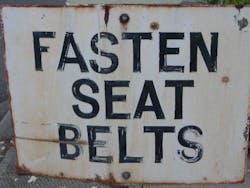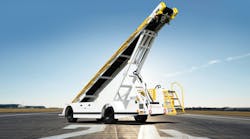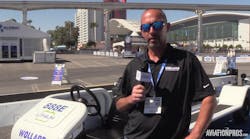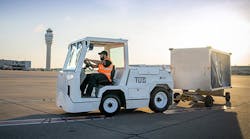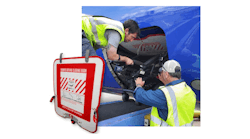We posted last week’s blog on Delta’s recent agreement with OSHA to install seat belts in 6,000 pieces of GSE at 90 U.S. airports to our LinkedIn group site.
We received plenty of comments from our members – in fact, I received a few more as I typed these words.
The comments were much like this:
“I've seen seat belts on forklifts and GSE that were tied in knots behind the seat or wadded up under it. I stress the importance of using installed belts to ensure benefits in case of accident or injury! Like anything it will be the Supervisor that that will have to enforce it and he MUST have support from the company.”
A few wondered what the speed limit was on the ramp and wondered if Atlanta-based Delta was employing ex-NASCAR drivers.
Still, whatever the speed, here’s another one to consider:
“Most ramp equipment has no soft ride. It's like riding a skate board hard as a rock. It actually hurts to ride. So if you hit a bump on a hard seat belt loader. You can be ejected.”
Many others wondered about rolling – not likely with such heavy, slow-moving equipment, but you never know.
“Never assume Tugs and Belt Loaders are driven by perfect people in perfect conditions. I've seen Governors get "tweaked." I've seen ditches close to GSE lanes with overturned vehicles. I've seen slick conditions up and down steep grades. Most airports don't have flat conditions on the entire property. If there's "potential" for an accident... Chances are high it will happen. It really is a training issue. The way Tugs and Belt Loaders are built, doesn't discount Human Error.”
Which led us to search for another OSHA requirement that says that if a manufacturer adds seat belts at the factory, the safety agency may also require a roll bar, too.
We didn’t have much luck ourselves searching for this, although one other post pointed to another agency for a clue:
“Gents, as typical with OSHA it is quite cryptic and you need to build the puzzle by going back and forth and referencing ANSI as in some parts of OSHA it simply points you to ANSI. The information is there, we are fortunate to have on our staff an engineer that had been on this path way back when it was imposed on Farm Tractors, (while he was working at FOMOCO,) and he was on our staff when it briefly came to our industry over 20 years ago. We are trying to retrieve those archives… However some of the equipment Mfg can probably assist.”
If anyone knows more about this issue, please let us know. And thank you for all the comments.
